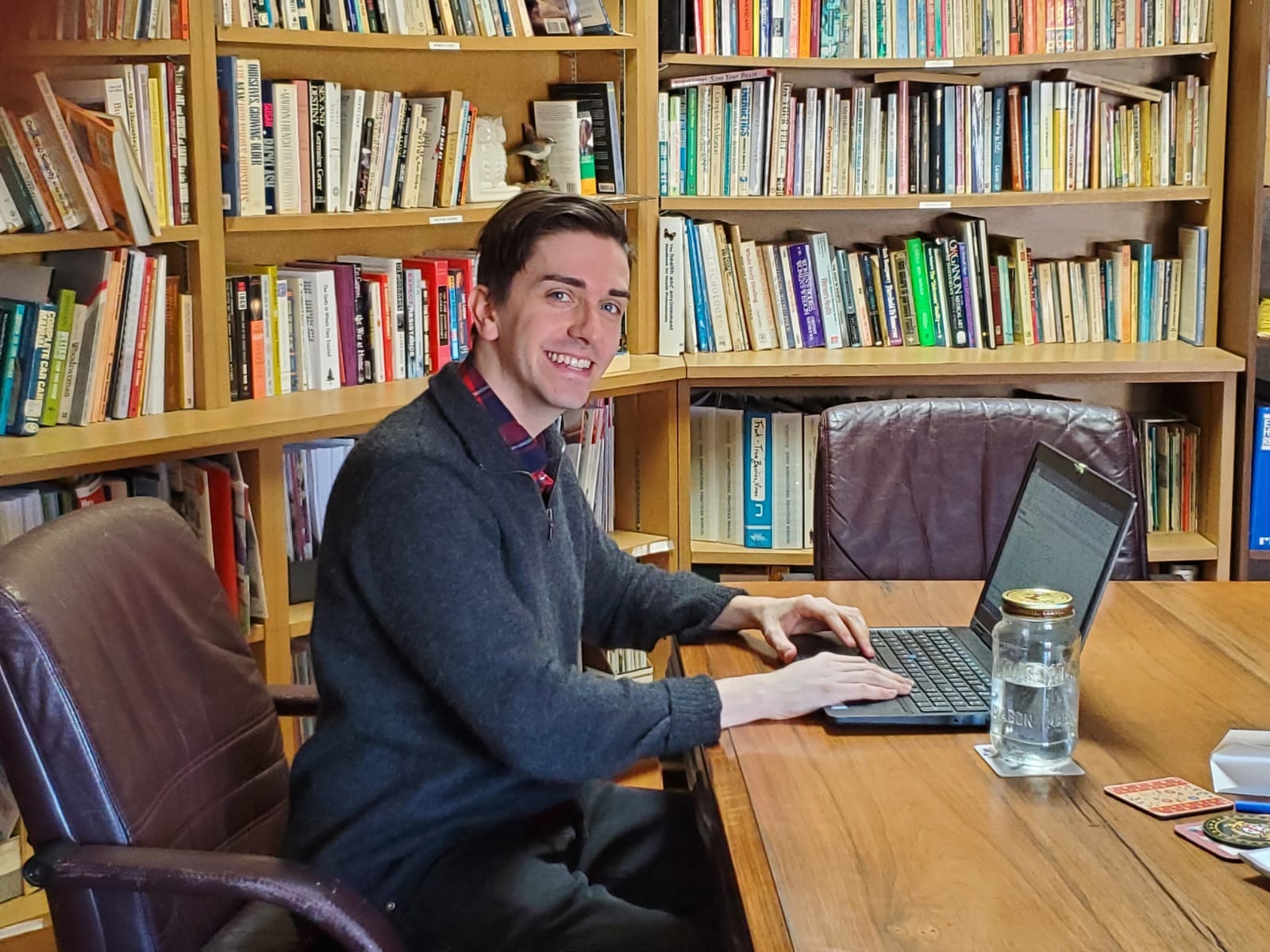
Whole Village is Helping Solve Climate Change!
When it comes to climate change, good news can be hard to come by. Heatwaves, droughts, and storms are getting worse. Scientists’ warnings are becoming more and more dire. All the bad news can be overwhelming. However, Whole Village is excited to share some much-needed good news.
Based on research by a grad student from the University of Waterloo, Whole Village is a “carbon negative” community, meaning that we remove more carbon from the air than we emit. This means that Whole Village is helping reduce the severity of climate change!
As part of his internship in the Master of Climate Change program, Justin Steinburg wrote a detailed report about Whole Village’s impact on climate change. This involved measuring the greenhouse gases created by the community from activities such as driving fossil fuel-powered cars and using electricity. These greenhouse gases cause climate change by trapping heat, which increases the average global temperature. Justin also estimated how much greenhouse gases were removed from the air (also known as carbon sequestration) with methods such as planting trees, creating biochar, and managing cattle grazing. In the end, the amount of greenhouse gases that Whole Village removed from the air was found to be nearly twice the amount that it had created in 2021 (175.5 tCO2e compared to 104.63 tCO2e).
The biggest way Whole Village sequestered so much carbon was by planting trees. In fact, over 24,000 trees have been planted since its founding twenty years ago. Not only do these trees add beauty, food, and habitats for birds and other critters, but they are also helping slow climate change by removing greenhouse gases from the air as they grow. It’s amazing how many benefits trees bring, and we love them for it.
Biochar is another way we sequester carbon at Whole Village. We create biochar by burning wood in a special kiln. We then spread the biochar onto our gardens, keeping the carbon in the soil and out of the air for thousands of years. Not only does biochar help fight climate change by sequestering carbon, but it also helps plants grow and soil hold moisture. As you can see, activities that are good for the climate also bring many other benefits.
Our regenerative agriculture practices also help sequester carbon and reduce emissions. By moving cattle between pastures at specific times, they increase the growth rate of the grasses and the amount of carbon they sequester. Plus, by spreading the cow manure on gardens and in pastures we reduce the creation of methane (a greenhouse gas) compared to industrial farms that store manure in tanks or lagoons. Also, by delaying our hay harvest a few weeks, we increase the carbon sequestered in the grasses, all while protecting birds that make their nests in the fields.
Nature conservation is an important part of Whole Village and it is also one of the most important and effective ways of reducing future climate change. In collaboration with Credit Valley Conservation and Escarpment Biosphere Conservancy, Whole Village is conserving twenty-eight acres of wetland forest and nine acres of other forests. These ecosystems sequester carbon and store it for a long time. In fact, wetlands have been found to store carbon for thousands of years.
In addition to sequestering carbon, residents of Whole Village reduce the amount of greenhouse gas emissions they create by making environmentally friendly choices in how they travel, heat their homes, eat, and consume. In fact, Justin’s research found that Whole Village residents created less than half the emissions of the average Canadian in 2021.
For most Canadians, driving their cars is one of the biggest ways they contribute to climate change. Whole Village residents create fewer travel emissions than average by driving electric vehicles, sharing cars between multiple people, and collectively buying bulk groceries.
While many homes in Canada are heated using natural gas (a fossil fuel that contributes to climate change) Whole Village’s main residence is heated using an electric heat pump and a masonry heater (a highly efficient fireplace). The building’s walls, ceiling, windows, and doors are well-insulated to reduce heat loss. Plus, since many people share a single building, it takes less energy per person to heat the building compared to single-family detached homes.
Diets are another important way individuals impact climate change and the environment. By growing much of our own food, supporting the onsite CSA, buying local organic produce, and having plant-rich diets, we minimize our environmental impact and promote healthy soil – all while getting to enjoy fresh, delicious, and healthy meals.
Growing food on-site has other advantages too, such as reducing the amount of garbage we create. In fact, Justin found that Whole Village residents create about one third of the garbage of Peel region’s per person average. Landfill waste is a major source of greenhouse gas emissions, so by creating less waste we reduce our impact on climate change. Our comparatively small amount of garbage is thanks to many practices such as buying in bulk, sharing, reusing, reducing consumption, repurposing, recycling, and composting.
By taking Whole Village’s relatively small emissions and subtracting its much larger carbon sequestration, Justin found the community to be carbon negative. This shows that ecovillages such as Whole Village are a valuable solution to the climate crisis. So the next time you are feeling overwhelmed by the state of the planet, remember that the solutions are out there.
Hopefully this model of community can inspire others and create a larger transition to a greener future in which humanity re-establishes balance within the web of life.
For more details about Whole Village’s impact on climate change you can read Justin’s full report here: https://docs.google.com/document/d/1rRTv0ayLFAZj8zqkwfTEmTfEjxCql_4Q/edit?usp=sharing&ouid=116023995229554188674&rtpof=true&sd=true


